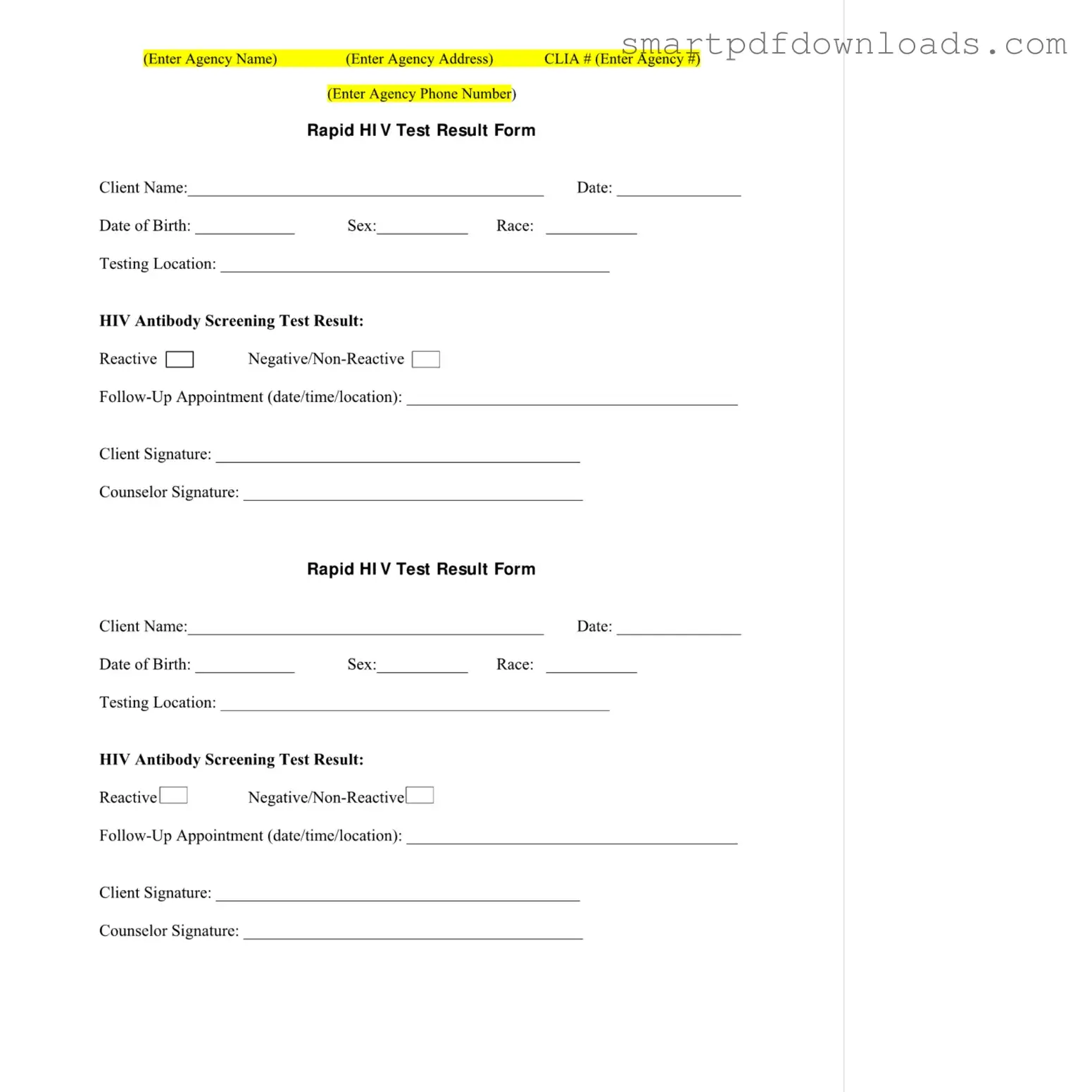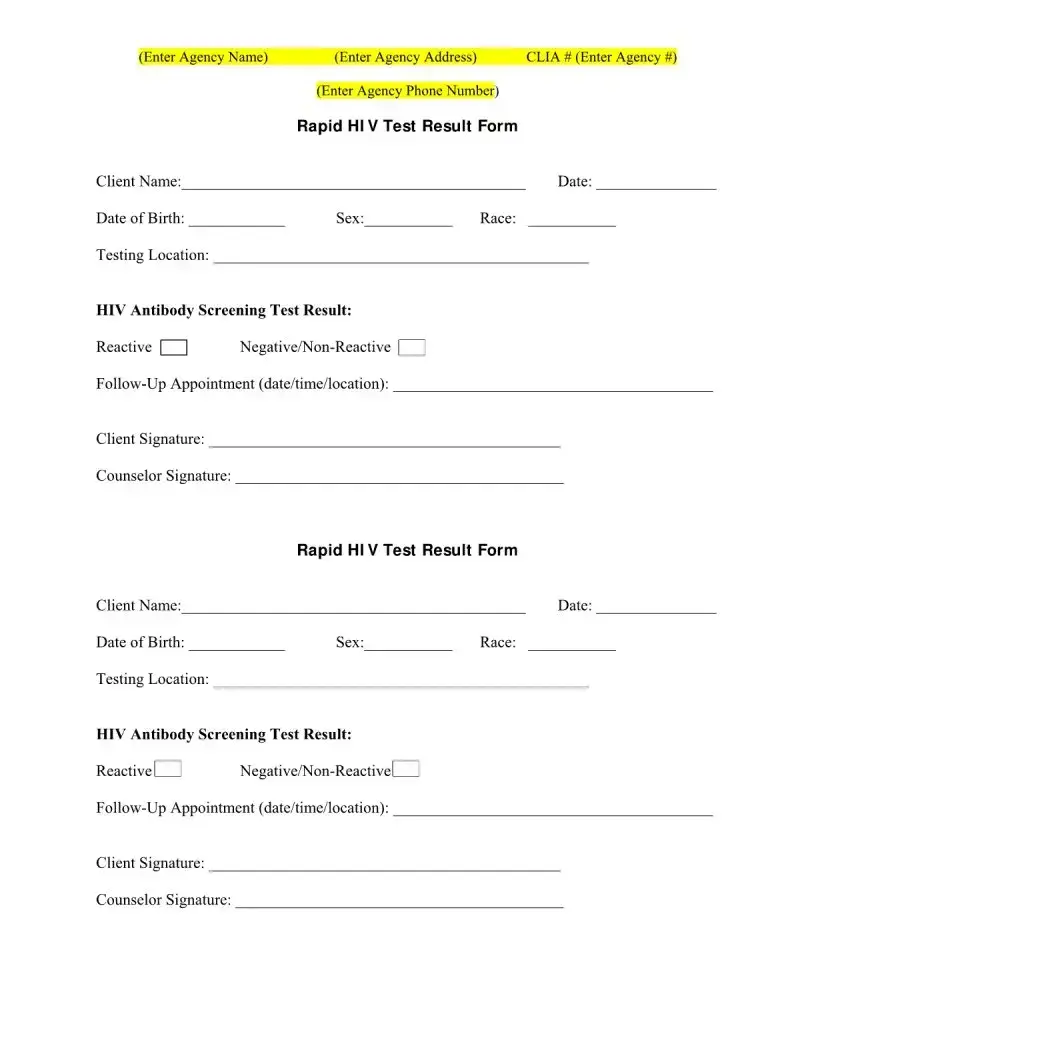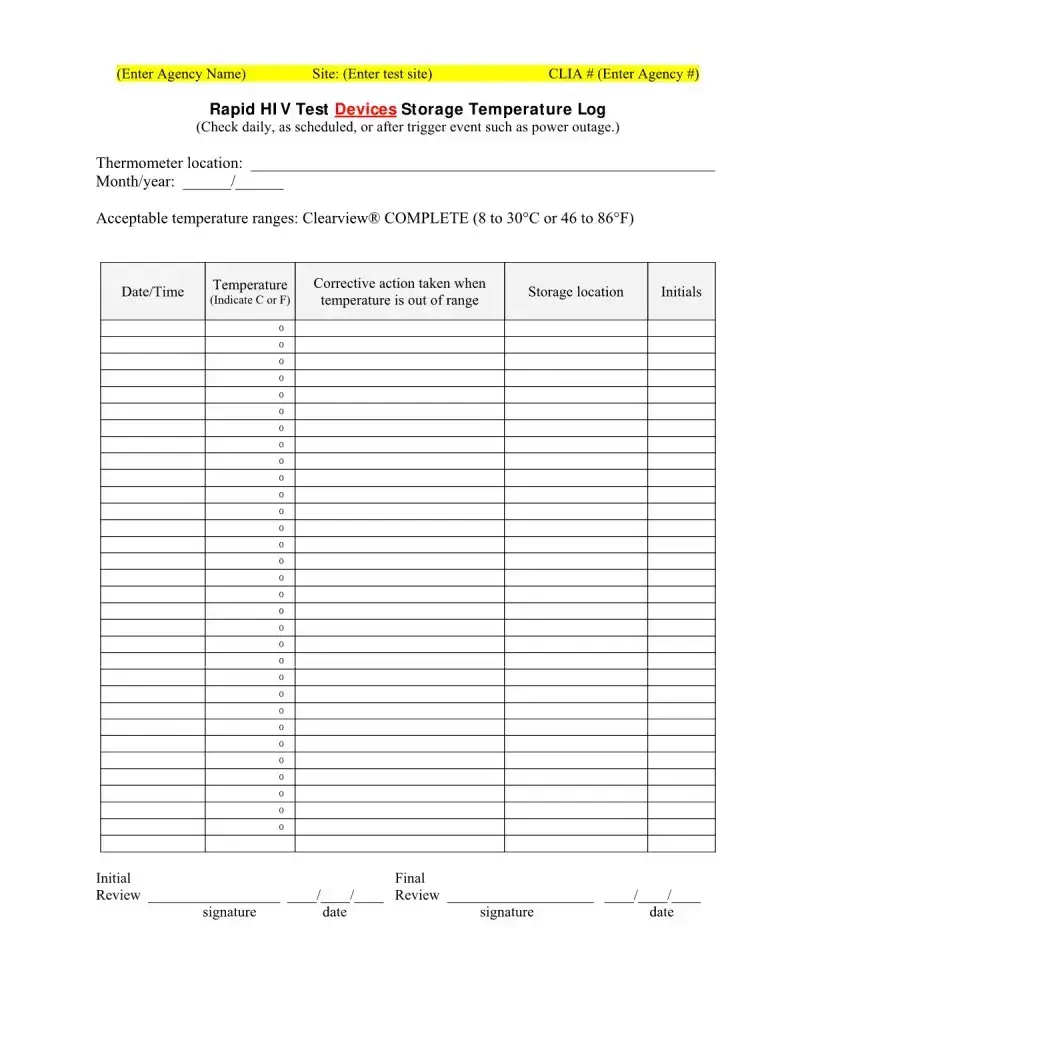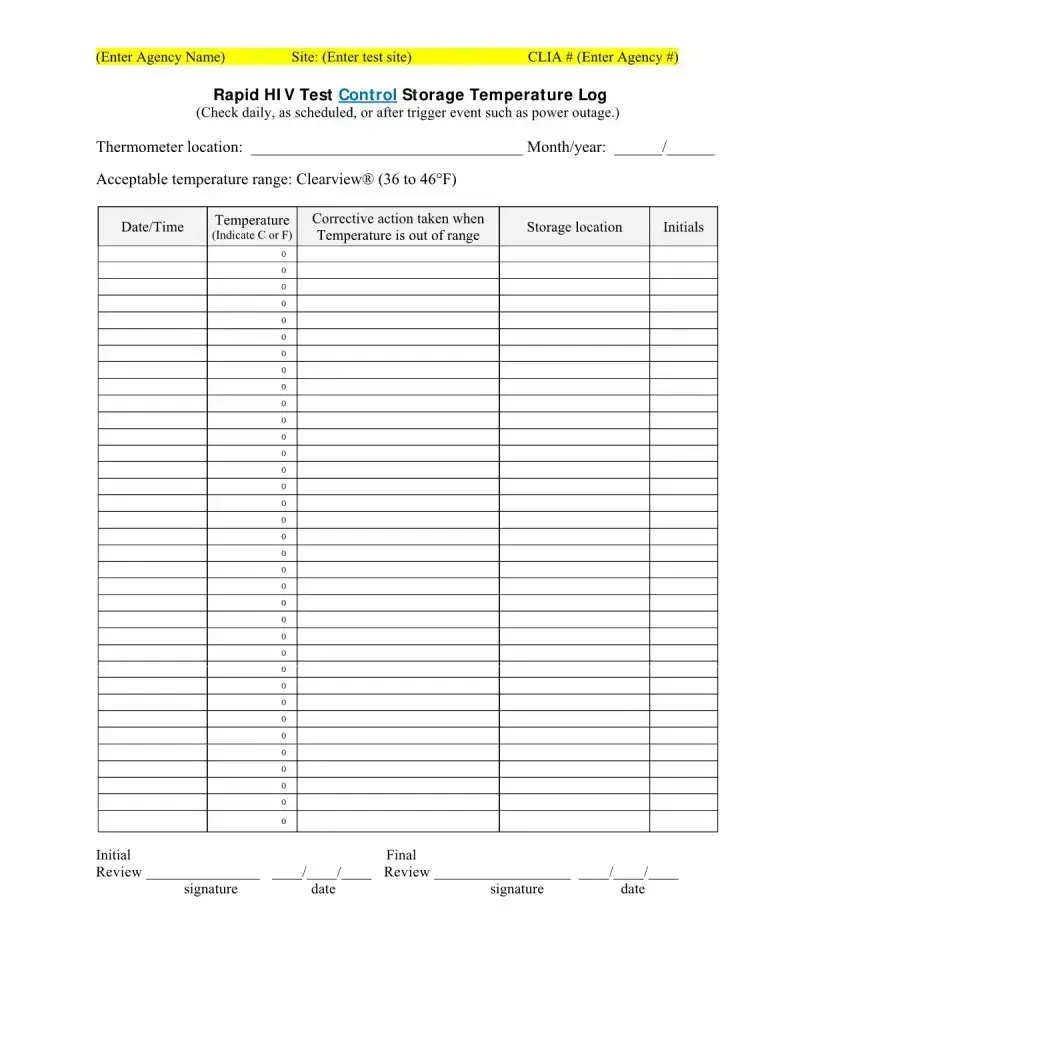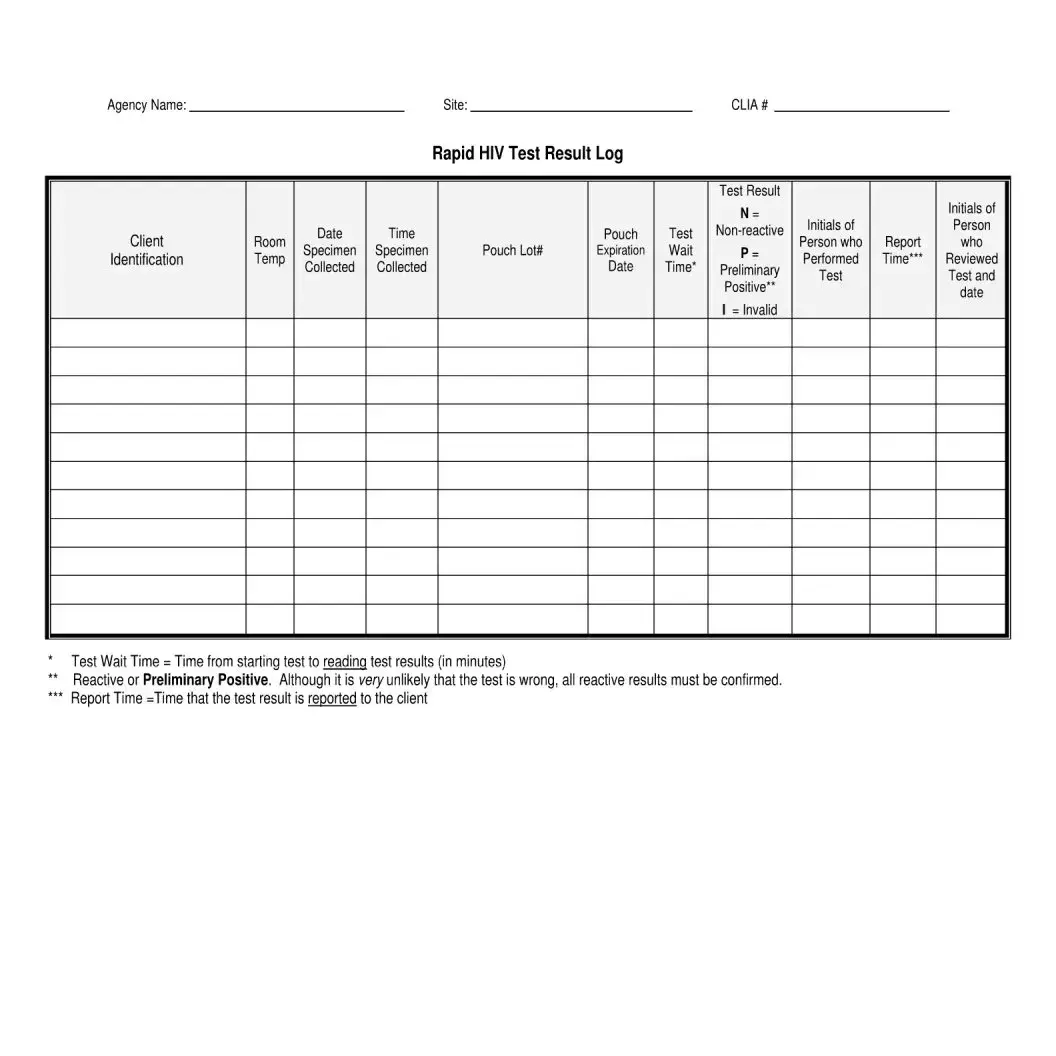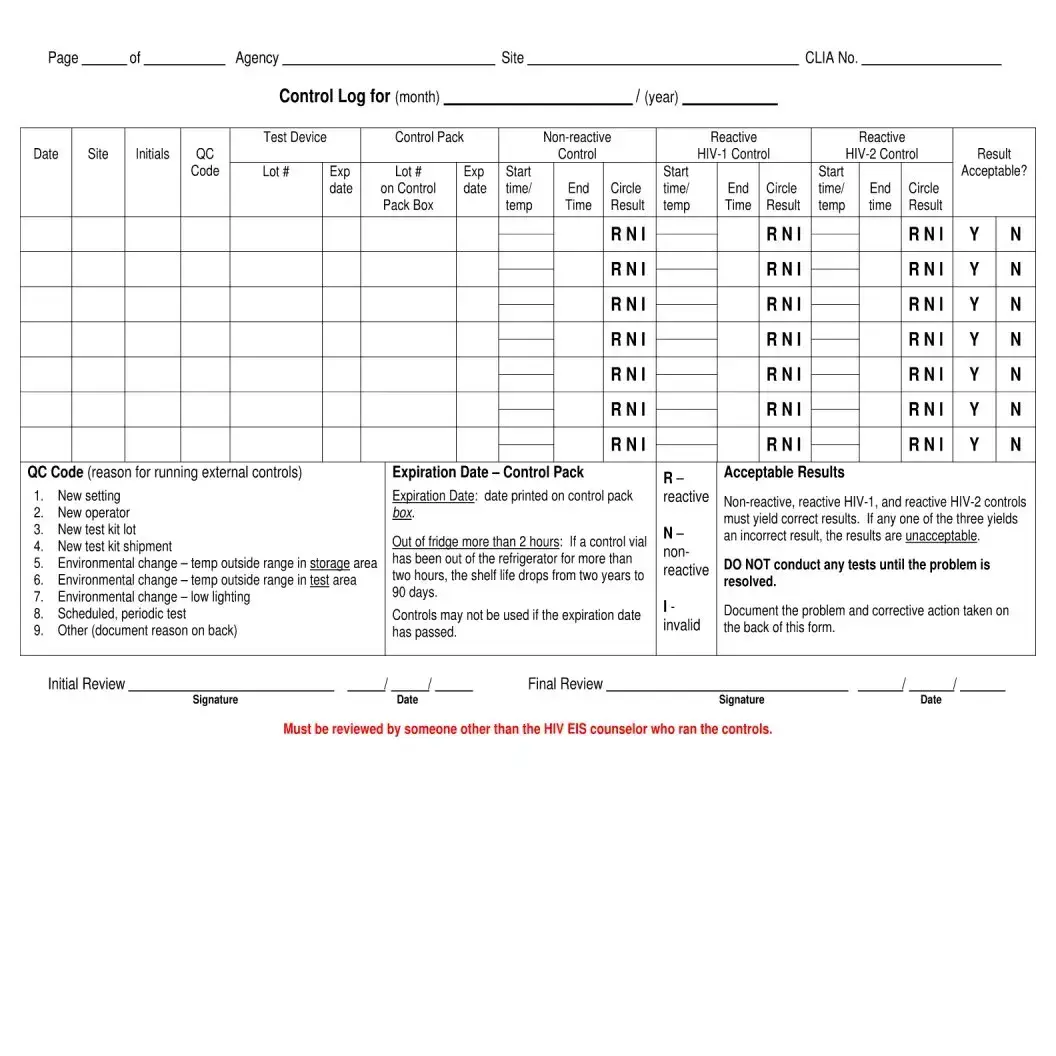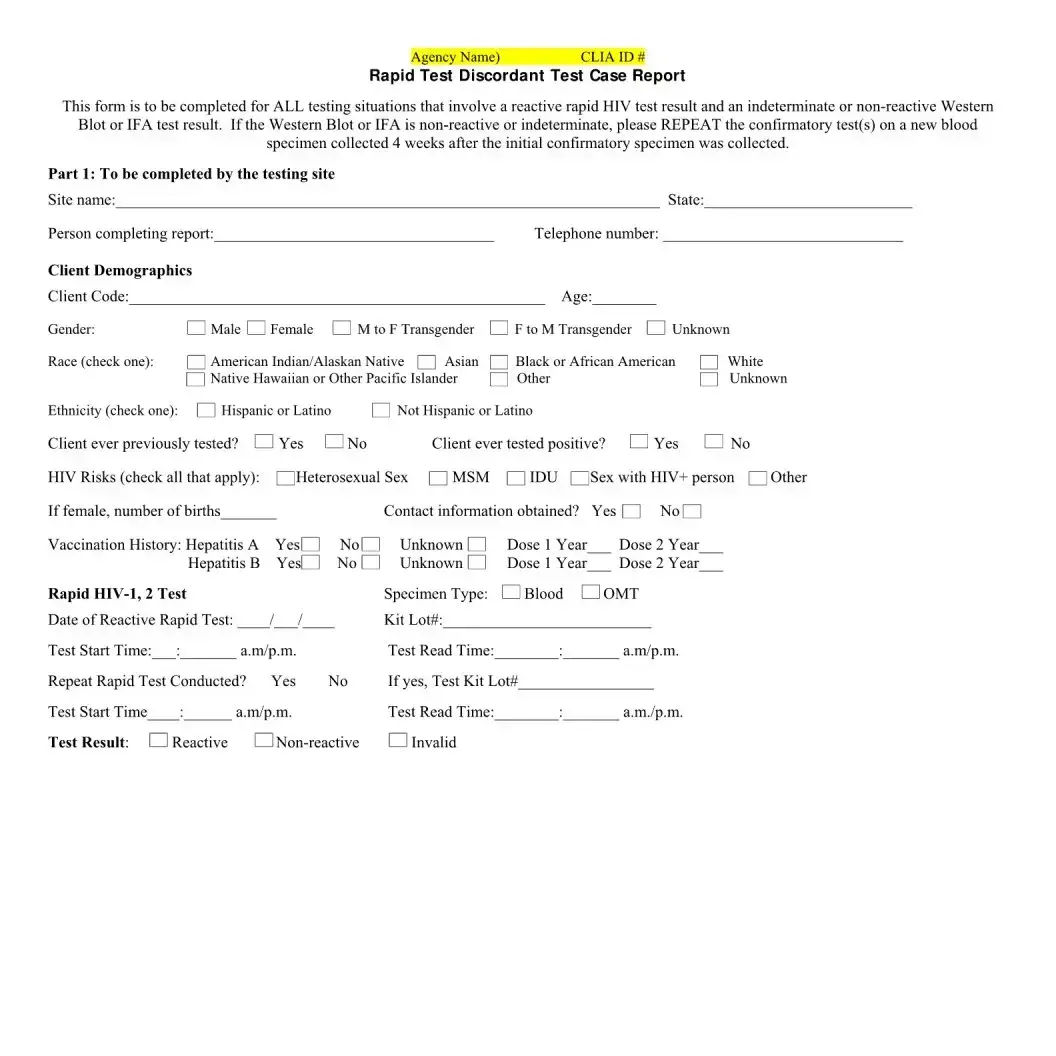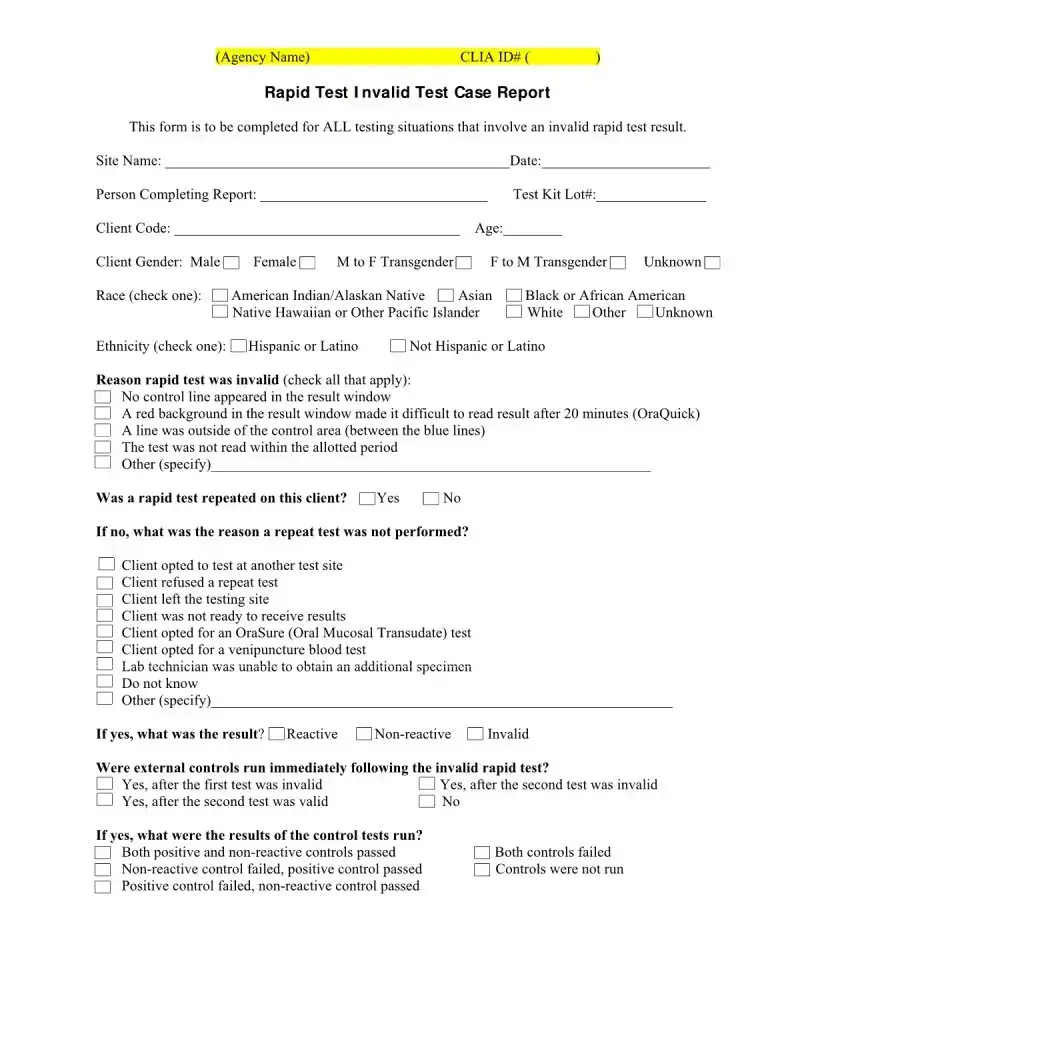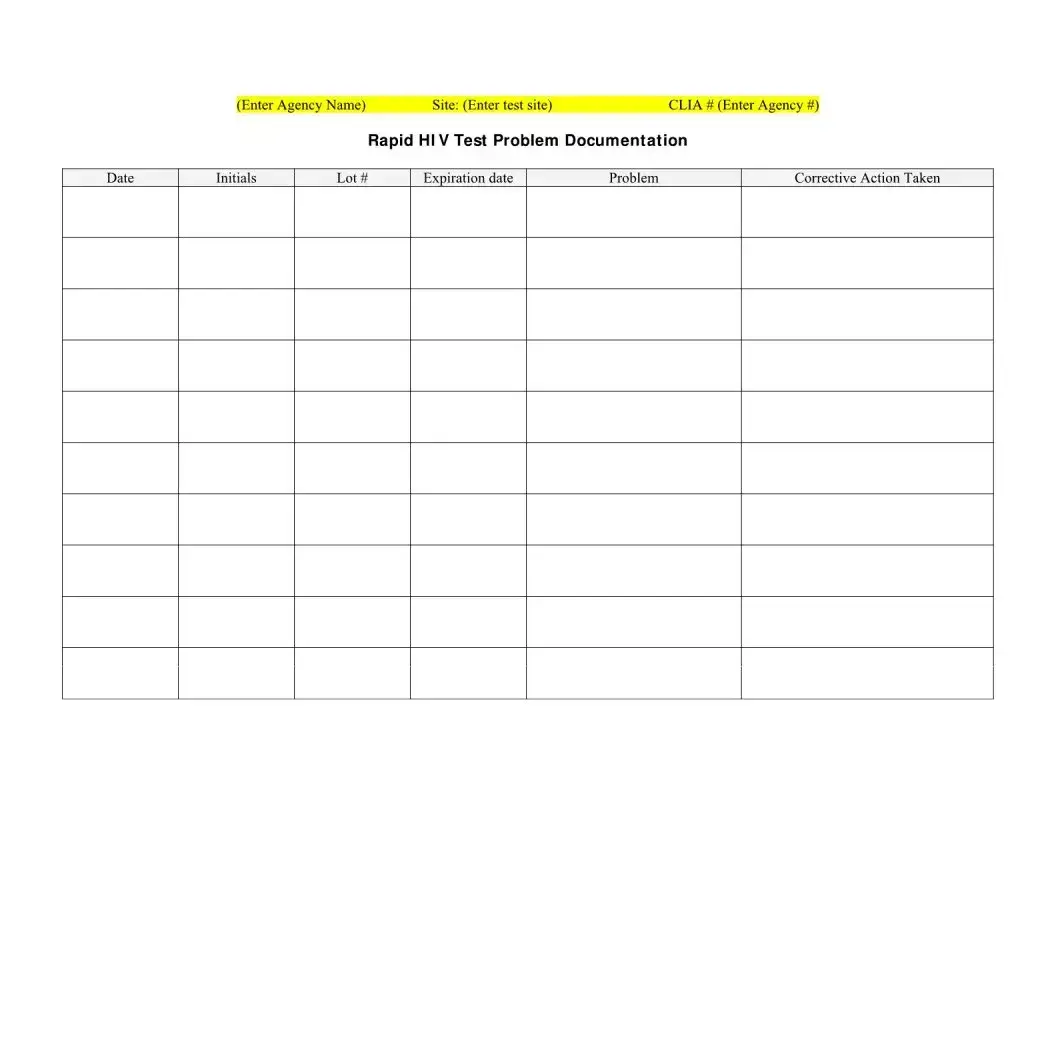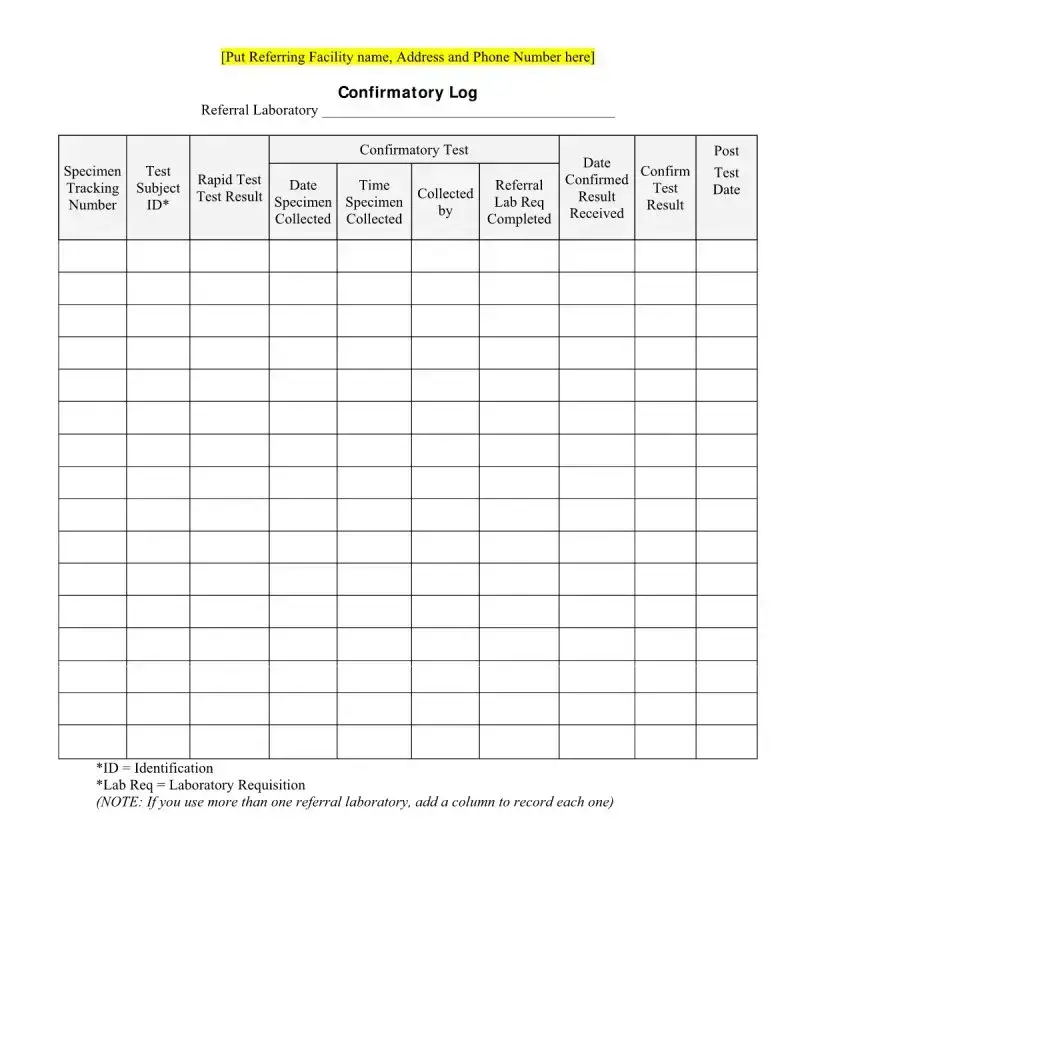Negative Hiv Test Form
The Negative HIV Test form is a crucial document used to record the results of an HIV antibody screening test. It includes essential details such as the client's name, testing location, and the outcome of the test, which can be either reactive or negative/non-reactive. This form not only serves as a record for the agency but also provides clients with important information regarding their health status.
Edit Negative Hiv Test Online
